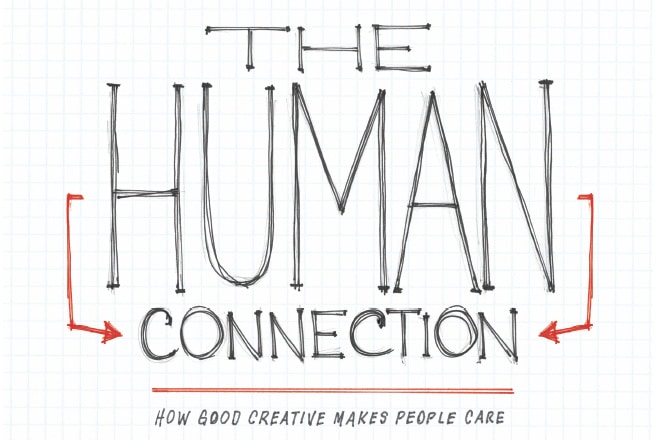The Human Connection: How Good Creative Makes People Care

“Creative” is an ambiguous term. In its common use, creative can describe everything from the work of geniuses like Einstein or Picasso, to sorority letters puffy-painted on a glitter-covered plastic tumbler. In marketing, however, creative means something quite specific. Creative is the art, copy and ideas that constitute an ad, website or social media message. And this creative has one simple, yet extremely important goal: to help people connect with a brand.
This connection occurs on two different levels; first by grabbing consumers’ attention, then by resonating with those consumers on an emotional level. Exactly how many ads the average American is exposed to in a day is hard to estimate. Do a quick Google search and you’ll see numbers ranging from a few hundred to several thousand. One thing is certain, though — whatever the number of ads we’re exposed to is, it’s a lot.
CREATIVE
How can a person pay attention to so many ads? The truth is they can’t. Consumers may be exposed to a ridiculous number of ads, but they pay serious attention to very few. Most ads are ignored by most people, most of the time. That’s where creative comes in. Good creative makes people notice.
It all starts with art direction. Colors, type treatment and images must work together to create something that stands out from the crowd and screams, “Look at me!” Otherwise, all the money and brain cells spent on strategic ad placement are wasted.
Art direction is just as important for websites. It’s a first-impression thing. The art direction sets the tone. It tells people if your brand is about fun and games or if it means serious business, if it’s hip and cool or smooth and sophisticated. Just like a first date, no matter how much a site has to offer, most people won’t give it a chance if it’s not worth looking at.
CONNECTION
Once noticed, the headlines, copy and art must work together to create an emotional connection. This is as true for B2B ads as it is for those promoting a fashion line or a charitable organization. People are emotional creatures, and every decision we make — whether it’s which cereal to buy or which insurance coverage to sign up for — has an emotional component.
The first person to understand this (or so advertising folklore goes) was Bill Bernbach. In the 1960s, Bernbach fired one of the first shots of advertising’s creative revolution with his famous Think Small ad for Volkswagen. At the time, most advertising focused on a product’s Unique Selling Point (USP), the one single attribute that distinguished it from every other brand.
By the 1960s, however, USP advertising was becoming less effective. The market had become saturated with ten versions of every product imaginable — and most were virtually identical. In this environment, a true USP was hard to find, and even harder to build a campaign around. More importantly, Bernbach knew that consumers were too busy with their own lives to be expected to carefully analyze and weigh the importance of competing USPs. He knew that for any marketing message to be effective it had to be interesting. It had to be worth a consumer’s time. It had to connect. That is truer today than ever before.
Good creative may make us laugh or put tears in our eyes. Good creative may inspire feelings of trust and safety or pride and vanity. Good creative may touch on our hopes and fears or arouse our sense of competition. But no matter what, to be effective, to be considered good, creative has to connect on a human level. And it is on that connection that great brands are built.